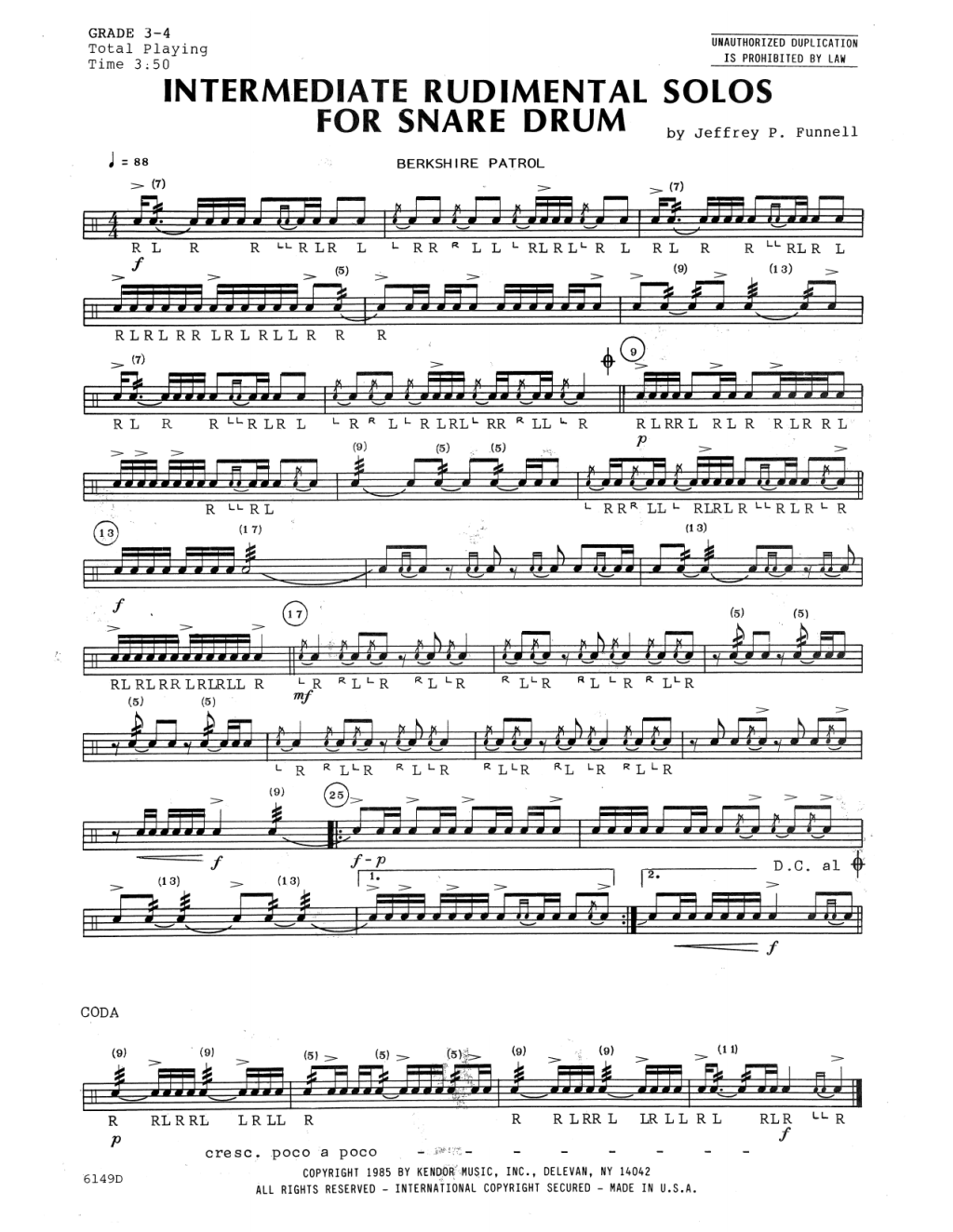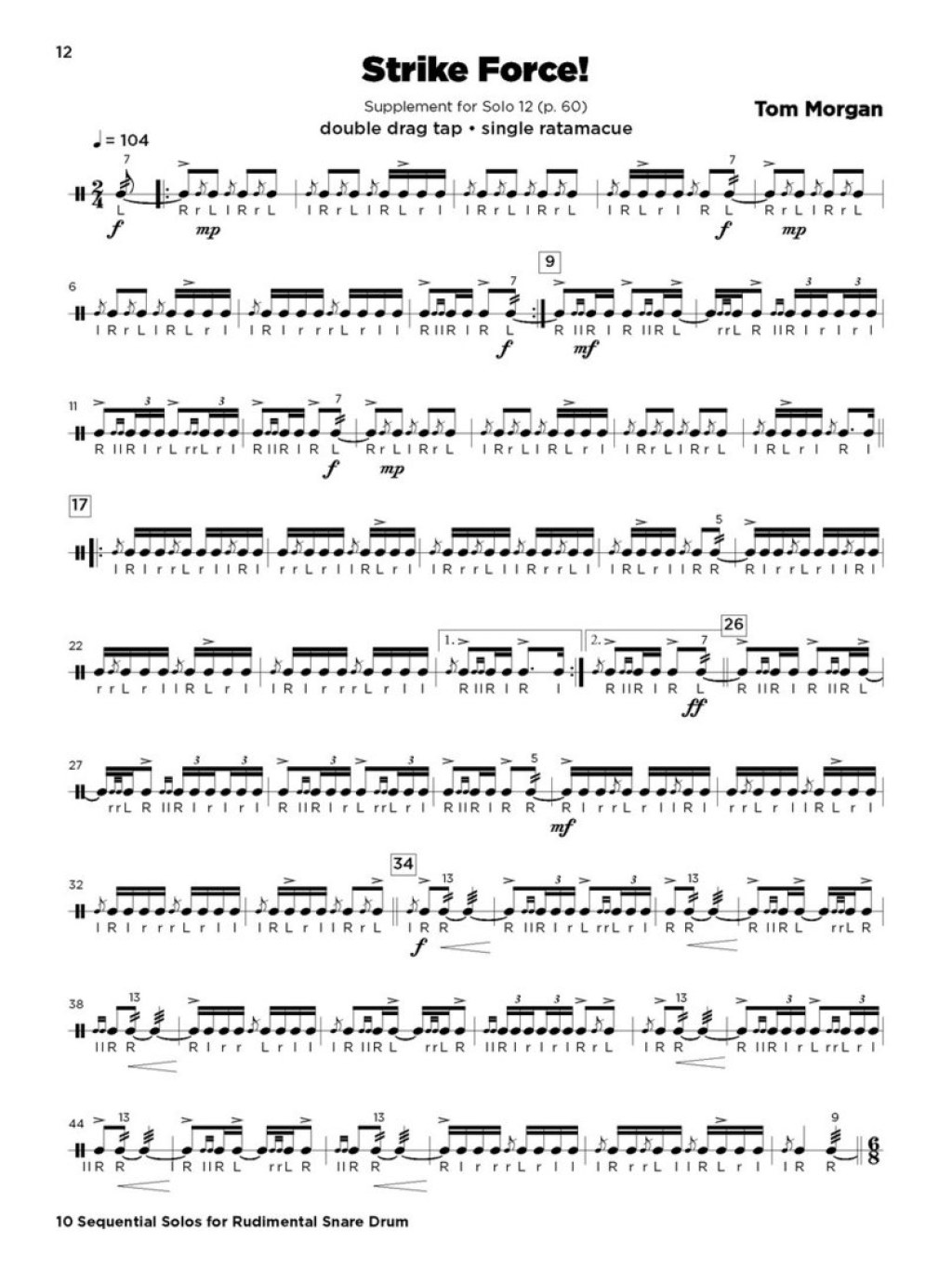Solo Snare Drum
Introduction
Dear Music Enthusiast,
Welcome to this informative article on solo snare drum, a captivating percussion instrument that has fascinated musicians and audiences alike for centuries. In this article, we will delve into the history, techniques, and significance of solo snare drum performances. Whether you are a seasoned drummer or simply someone with a curiosity for music, this article will provide valuable insights and knowledge about this extraordinary instrument.

Image Source: amazonaws.com
So, let’s embark on this rhythmic journey and explore the world of solo snare drum!
What is Solo Snare Drum?
🥁 Solo snare drum is a percussion instrument that consists of a cylindrical drum shell with a tightly stretched membrane, or drumhead, on one or both ends. It is typically played with drumsticks or brushes and can produce a wide range of sounds, from crisp and sharp to deep and resonant. The solo snare drum is often used in various musical genres, including classical, jazz, and marching bands.

Image Source: percussion-brandt.de
🎵 Solo snare drum performances involve a single drummer showcasing their skills and creativity on this versatile instrument. The drummer explores different techniques, rhythms, and patterns to captivate the audience’s attention and convey a musical story solely through the snare drum’s sounds.
🌟 Solo snare drum performances are highly engaging and demand both technical precision and artistic expression from the drummer. They offer a unique and intimate musical experience, allowing the audience to appreciate the complexity and beauty of this often-overlooked instrument.
Now, let’s delve deeper into the fascinating world of solo snare drum and its significance in the music industry.
Who Plays Solo Snare Drum?
🥁 Solo snare drum performances are usually performed by skilled percussionists or drummers who specialize in this specific instrument. These individuals spend years honing their craft, mastering various techniques and styles to become proficient solo snare drum performers.
🎵 Many professional drummers, both in orchestras and independent artists, incorporate solo snare drum performances into their repertoire to showcase their technical prowess and musicality. These performances often serve as a platform for drummers to demonstrate their unique style and musical interpretations.
🌟 Additionally, solo snare drum competitions and festivals provide opportunities for aspiring drummers to showcase their talent and gain recognition in the percussion community. These events not only celebrate the artistry of solo snare drum playing but also encourage young musicians to explore the instrument and push its boundaries.
Now that we know who plays solo snare drum, let’s explore its historical significance and how it has evolved over time.
When Did Solo Snare Drum Gain Prominence?
🥁 The origins of solo snare drum can be traced back centuries ago, with its presence in traditional military bands and ceremonial performances. In these contexts, the snare drum was primarily used to convey commands and signals on the battlefield.
🎵 However, the prominence of solo snare drum in musical performances began to emerge during the late 19th and early 20th centuries. Composers and percussionists started recognizing the expressive potential of the instrument and started incorporating solo snare drum compositions into their works.
🌟 Solo snare drum gained further prominence in the 20th century through the rise of jazz music. Drummers like Buddy Rich and Gene Krupa pushed the boundaries of solo snare drum performances, infusing improvisation and virtuosity into their playing. Their innovations paved the way for future generations of drummers to explore the possibilities of solo snare drum.
As we continue our exploration, let’s uncover the various contexts in which solo snare drum is utilized and its significance in different musical settings.
Where is Solo Snare Drum Utilized?
🥁 Solo snare drum finds its place in a wide range of musical settings, including orchestras, jazz ensembles, contemporary music groups, and marching bands. Its versatility allows it to adapt to different genres and contexts, adding depth and texture to the overall musical composition.
🎵 In orchestras, solo snare drum often takes center stage in percussion concertos, where it showcases the instrument’s technical capabilities and expressive qualities. It can also be used in symphonic works to create intricate rhythms and provide accentuation to certain musical phrases.
🌟 In jazz ensembles, solo snare drum serves as a creative outlet for drummers to express their improvisational skills. It takes on a prominent role in drum solos, driving the rhythm and providing dynamic variations to enhance the overall musical performance.
Furthermore, solo snare drum is a vital component of marching bands, adding the quintessential percussive elements to the ensemble’s sound. It provides the cadence and rhythm needed for synchronized movement and creates a powerful impact during parades and halftime shows.
Now that we have explored the various contexts where solo snare drum is utilized, let’s uncover the reasons why this instrument holds such significance in the music world.
Why is Solo Snare Drum Significant?
🥁 Solo snare drum is significant for several reasons. Firstly, it showcases the technical prowess and artistic expression of the drummer. It allows drummers to demonstrate their mastery of complex rhythmic patterns, dynamics, and textures, captivating audiences with their skill and creativity.
🎵 Additionally, solo snare drum performances offer a unique musical experience. They highlight the beauty and versatility of this often-underestimated instrument, bringing it to the forefront and showcasing its melodic and tonal capabilities.
🌟 Furthermore, solo snare drum compositions and performances contribute to the diversification of musical genres. They push the boundaries of traditional percussive roles and demonstrate the solo snare drum’s potential as a standalone instrument, capable of conveying emotions and narratives on its own.
The significance of solo snare drum is not limited to the instrument itself but extends to the drummers who dedicate their lives to mastering it. Their contributions to the world of percussion inspire future generations and contribute to the evolution of music as a whole.
Now that we understand the significance of solo snare drum, let’s delve into the techniques, advantages, and disadvantages of this captivating instrument.
How to Play Solo Snare Drum?
🥁 Playing solo snare drum requires a combination of technical skill, musicality, and creativity. Here are some essential techniques used in solo snare drum performances:
1. Rudiments: Drummers utilize a wide range of rudiments, such as single strokes, double strokes, paradiddles, and flams, to create intricate patterns and rhythms on the snare drum.
2. Dynamics: Drummers explore different dynamic levels, ranging from soft and delicate to loud and powerful, to convey emotions and add depth to their performances.
3. Rolls: Rolls are an essential technique in solo snare drum playing. Drummers execute various roll patterns, including single stroke rolls, buzz rolls, and press rolls, to create sustained sounds and build tension in their performances.
4. Brush Techniques: In addition to drumsticks, drummers often use brushes to produce softer and more nuanced sounds on the snare drum. Brush techniques involve sweeping motions and delicate brush-to-drumhead contact.
5. Extended Techniques: Some drummers incorporate extended techniques, such as playing the snare drum with mallets or using unconventional objects to elicit unique and unexpected sounds.
By mastering these techniques and combining them with their own artistic interpretations, drummers can create captivating solo snare drum performances.
Advantages and Disadvantages of Solo Snare Drum
🥁 Like any instrument, solo snare drum has its advantages and disadvantages. Let’s explore them:
Advantages:
1. Versatility: Solo snare drum can adapt to various musical genres and contexts, providing a wide range of sounds and rhythmic possibilities.
2. Expressive Potential: The solo snare drum allows drummers to convey emotions and narratives through their playing, creating a captivating and intimate musical experience.
3. Technical Showcase: Solo snare drum performances serve as a platform for drummers to showcase their technical skills, precision, and creativity.
4. Unique Musical Experience: Solo snare drum performances offer a distinct musical experience, allowing the audience to appreciate the instrument’s complexity and beauty.
5. Musical Collaboration: Drummers often collaborate with composers and other musicians to create innovative compositions and explore the boundaries of solo snare drum playing.
Disadvantages:
1. Limitation as a Solo Instrument: As a standalone instrument, the solo snare drum has certain limitations compared to more expansive percussion setups.
2. Technical Difficulty: Mastering the intricacies of solo snare drum playing requires years of dedicated practice and study.
3. Lesser Visibility: Solo snare drum performances may not receive as much recognition and exposure as those featuring more prominent instruments.
4. Limited Repertoire: Compared to other instruments, the repertoire for solo snare drum is relatively limited, which challenges drummers to explore and expand the existing repertoire.
5. Instrument Cost: High-quality snare drums can be expensive, making it challenging for aspiring drummers to acquire the instrument.
Frequently Asked Questions (FAQs)
🥁 Here are some frequently asked questions about solo snare drum:
1. Can solo snare drum be integrated into other musical genres?
Yes, solo snare drum can be seamlessly integrated into various musical genres, including classical, jazz, rock, and contemporary music.
2. Are there any famous solo snare drum compositions?
Yes, there are several renowned solo snare drum compositions, such as The Black Page by Frank Zappa and By the Sword by Casey Cangelosi.
3. Is solo snare drum suitable for beginners?
While solo snare drum playing requires technical proficiency, beginners can start by practicing basic rudiments and gradually progress to more advanced techniques.
4. Are there any specific solo snare drum techniques for jazz music?
Yes, jazz drumming often involves improvisational techniques, syncopated rhythms, and brushwork, which can be incorporated into solo snare drum performances.
5. Can solo snare drum be used in electronic music?
Yes, solo snare drum can be sampled and integrated into electronic music production, adding organic and acoustic elements to the electronic soundscapes.
Conclusion
In conclusion, solo snare drum is a captivating instrument that has captured the hearts of musicians and audiences worldwide. Its versatility, expressive potential, and technical demands make it a unique and significant component of various musical genres. Solo snare drum performances allow drummers to showcase their skills, creativity, and musicality, providing an intimate and engaging musical experience.
If you are a drummer or a music enthusiast, I encourage you to explore the world of solo snare drum further. Embrace the rhythmic possibilities, master the techniques, and discover the beauty that lies within this extraordinary instrument.
Final Remarks
Dear readers, I hope this article has provided valuable insights and knowledge about solo snare drum. As you embark on your musical journey, remember that dedication, practice, and a passion for music will pave the way to your own rhythmic mastery. Embrace the artistry of the solo snare drum, and let its beats guide you towards new horizons.
Disclaimer: The information provided in this article is for educational purposes only. The views and opinions expressed herein are those of the author and do not necessarily reflect the official policy or position of any music institution or organization.
Information about Solo Snare Drum
Type:
Membranophone
Origin:
Various cultures worldwide
Main Material:
Wood, metal, or synthetic materials
Playing Techniques:
Drumsticks, brushes, mallets
Genres:
Classical, jazz, rock, marching band
Famous Solo Snare Drummers:
Buddy Rich, Gene Krupa, Casey Cangelosi
Notable Solo Snare Drum Compositions:
The Black Page (Frank Zappa), By the Sword (Casey Cangelosi)